
In this guide, you will get:
- Pre-planning checklist
- Strategy implementation checklist
- Review checklist
- Bonus: Helpful AI tools to make your life super easy!
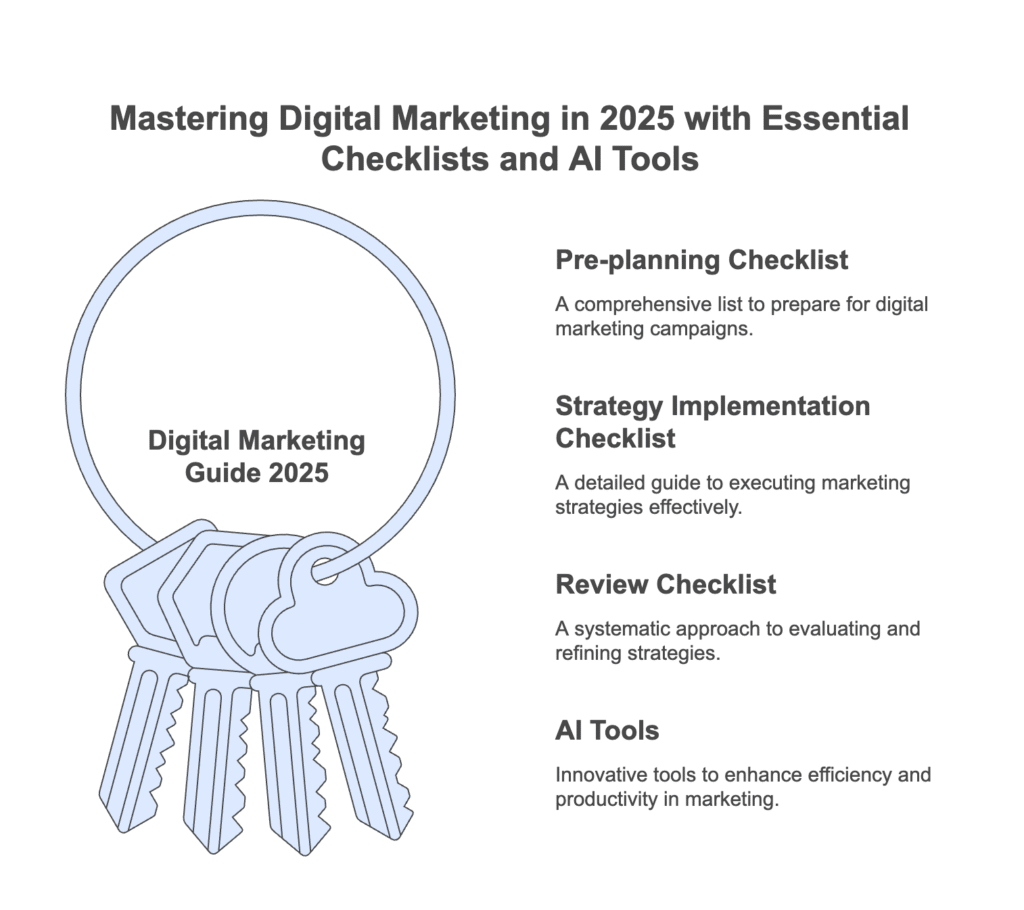
Pre-Planning Checklist
1. Evaluate Your Brand and Online Presence
- Perform a brand audit: Ensure your logo, branding assets, messaging, tone, and visuals align with your target audience.
- Conduct a website design audit: Check for mobile responsiveness, user experience (UX), and fast loading speeds.
2. Understand Your Audience
- Develop detailed buyer personas.
- Research customer pain points and preferences using surveys or social listening tools.
- Develop detailed customer journeys.
3. Perform Competitor Analysis
- Analyse competitors’ websites, social media strategies, and SEO rankings.
- Identify gaps in their strategy that you could capitalise on.
4. Set SMART Goals
- Define specific, measurable, achievable, relevant, and time-bound objectives (e.g., increase website traffic by 25% by Q4 2025), beyond just revenues.
5. Plan Your Content Strategy
- Map out seasonal campaigns and evergreen content themes.
- Align content with major events or product launches.
- Prepare a content mix of product/service, educational, and user-generated content.
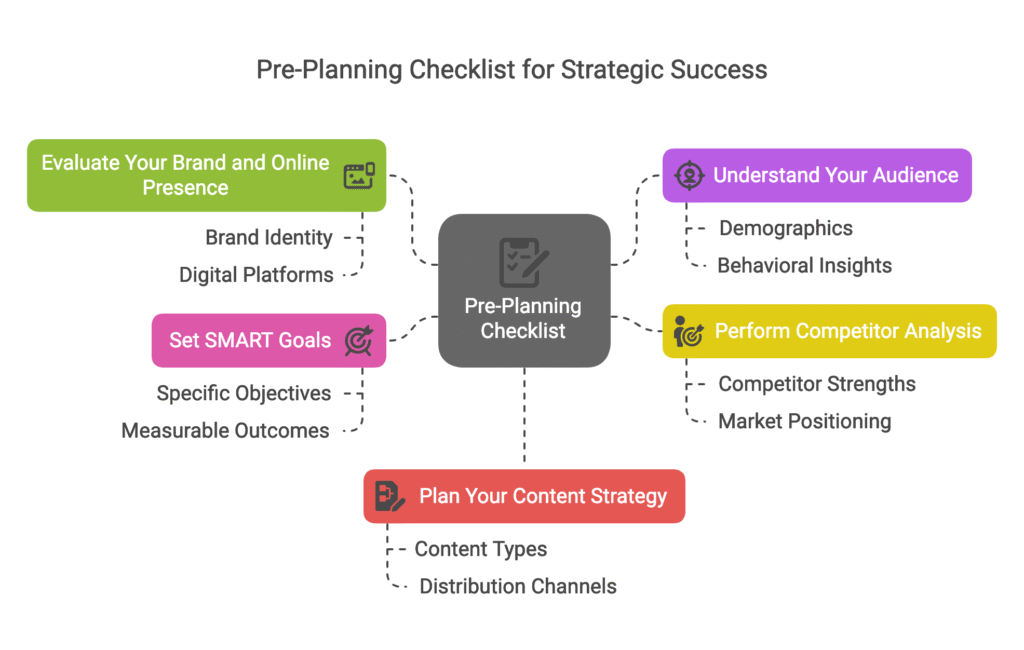
Strategy Implementation Checklist
1. Website Optimization
- Fix technical SEO errors such as indexing issues and slow page speeds.
- Optimise on-page SEO elements, like meta tags, headings, and alt texts for images.
2. Social Media Marketing
- Update social media profiles with consistent branding.
- Build a content calendar with an engaging mix of posts, stories, and videos.
- Engage with your audience regularly through comments and direct messages.
3. Email & SMS Marketing
- Create automated email workflows for nurturing leads.
- Segment your email list for personalised campaigns.
- Monitor open rates and click-through rates (CTR) to optimise performance.
- Develop SMS marketing to complement email campaigns.
4. Paid Advertising Campaigns
- Set up targeted PPC campaigns on platforms like Google, Meta, TikTok, LinkedIn, and Spotify, subject to your buyer personas.
- Test ad creatives and optimise them based on cost-per-click (CPC) and return on ad spend (ROAS).
5. Content Distribution
- Use a multi-channel approach: Publish blogs, videos, and infographics across platforms like LinkedIn, YouTube, Instagram, and others.
- Leverage influencer partnerships where relevant.
6. Track Performance Metrics
- Set up Google Analytics to monitor traffic sources, bounce rates, and conversions.
- Use social media analytics tools to track engagement rates.
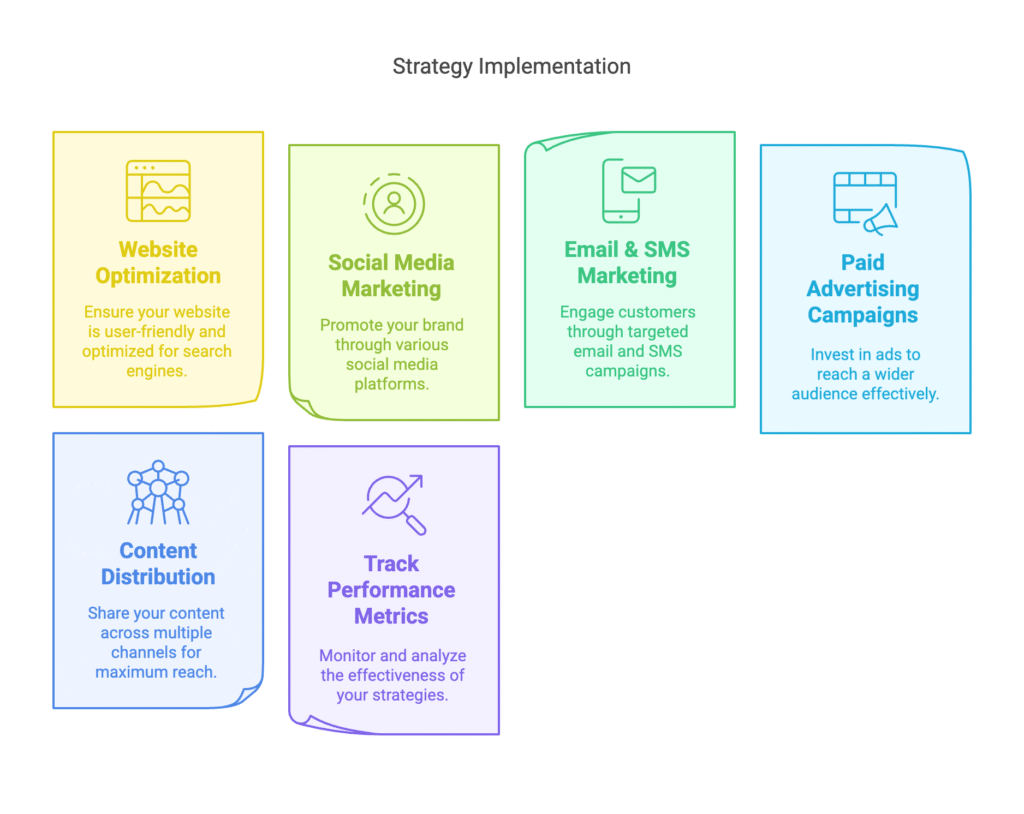
Review Checklist
1. Monitor Key Metrics Monthly
- Review SEO performance: organic traffic growth, keyword rankings.
- Assess email marketing analytics: open rates, CTRs, unsubscribes.
- Track social media growth: follower count and engagement rates.
2. Evaluate Campaign ROI
- Measure the effectiveness of paid ads using ROAS and CPC metrics.
- Analyse lead generation efforts by tracking cost-per-lead (CPL) and conversion rates
3. Stay Updated on Trends
- Monitor competitor activity to adapt strategies as needed.
- Stay informed about digital marketing trends like AI tools or new platform features.
4. Refresh Content Regularly
- Update outdated blogs or landing pages for better SEO performance.
- Repurpose high-performing content into different formats (e.g., turning a blog post into a video).
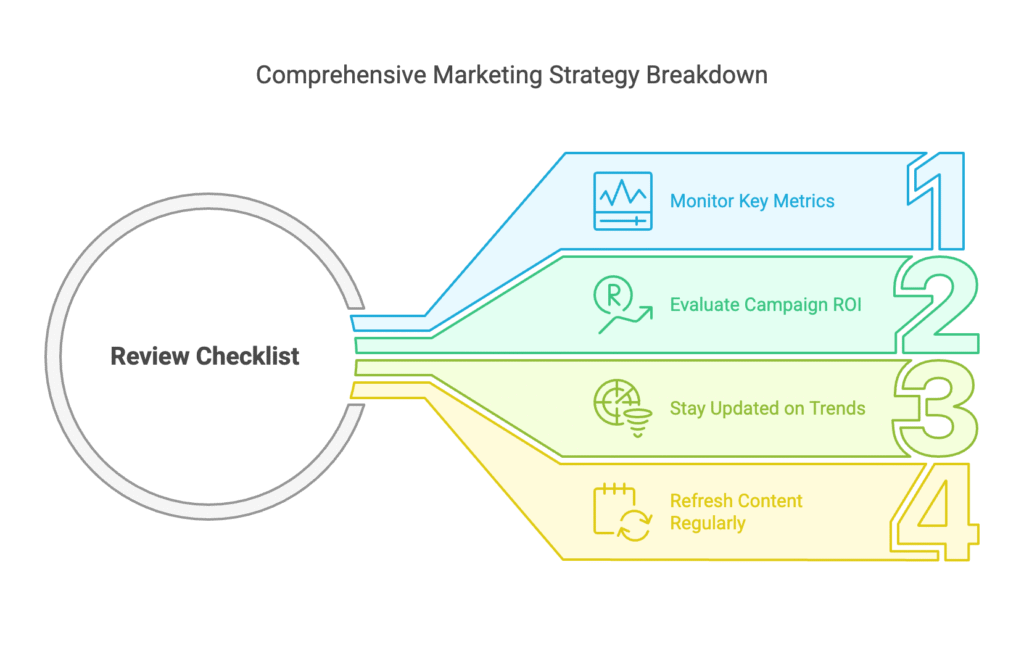
Bonus: Helpful AI Tools
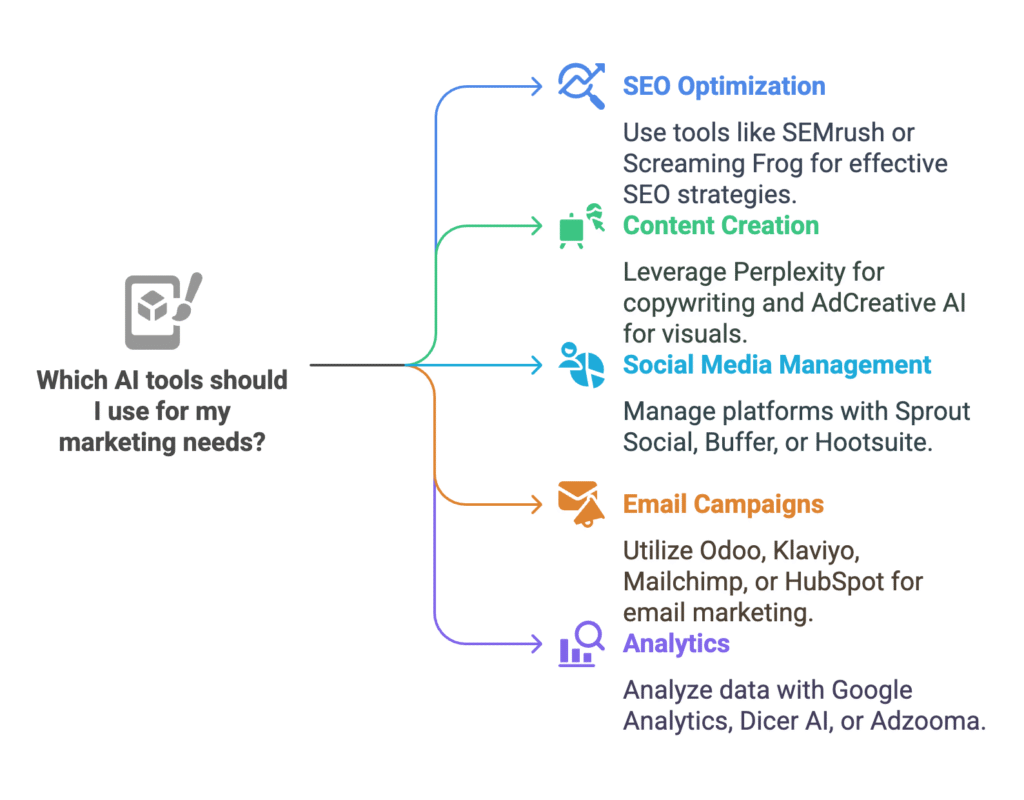
This checklist ensures you’re fully prepared to maximise ROI from your digital marketing efforts in 2025!

